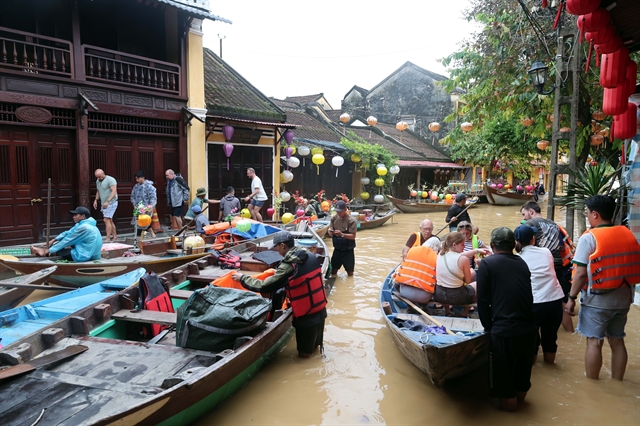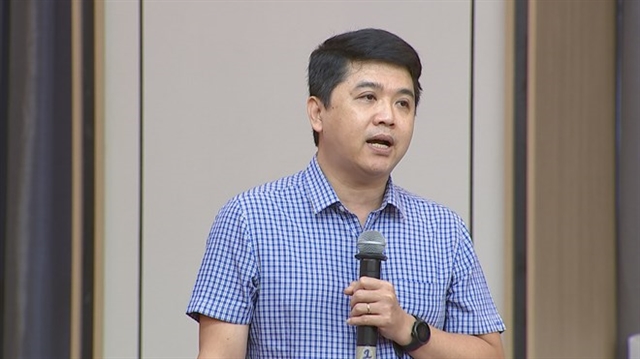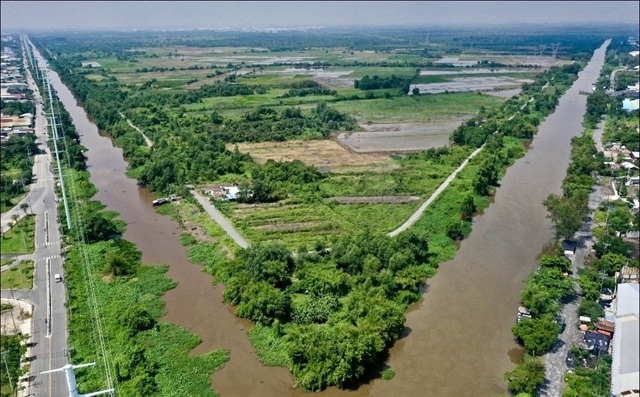 Opinion
Opinion

 |
| Deputy Director of Việt Nam Administration of Disease Prevention Võ Hải Sơn. — Photo courtesy of Việt Nam Government Portal |
While Việt Nam has not yet recorded any cases of the mosquito-borne chikungunya virus, health experts are urging increased vigilance amid the ongoing hot and humid summer weather, as well as rising outbreaks in other parts of the world.
The Deputy Director of the Việt Nam Administration of Disease Prevention (VADP), under the Ministry of Health, Võ Hải Sơn, spoke to the press regarding the current situation and outlined necessary preventive measures.
How is the Ministry of Health monitoring the global situation of chikungunya disease, particularly the latest developments in Guangdong Province of neighbouring China, where major outbreaks have been reported?
Chikungunya is an infectious disease caused by the chikungunya virus (CHIKV). It is not transmitted directly from person to person but via Aedes mosquitoes, the same genus that spreads dengue fever. They cause mosquito bites mainly during the day, with peak activity in the early morning and late afternoon.
According to the World Health Organization (WHO), chikungunya was first recorded in 1952 in Tanzania (eastern Africa). On July 22, 2025, the WHO issued a warning about its rapid transmission, with major outbreaks reported on Indian Ocean islands such as La Réunion and Mayotte, which have since spread to parts of Africa, South Asia and Europe.
China’s Guangdong Provincial Centre for Disease Control and Prevention reported over 4,800 chikungunya cases in the first half of 2025, which is the largest outbreak ever of the disease in the area. All reported cases were mild, with no severe infections or fatalities.
From the beginning of 2025 to August 2, Singapore also reported 17 chikungunya virus-induced fever cases, more than double the figure in the same period in 2024 (eight cases). Among them, at least 13 travelled to outbreak areas abroad.
The VADP is working closely with the WHO and national agencies in charge of international health regulations to monitor the disease, share updates for prompt reports, and propose suitable prevention and control measures.
Has Việt Nam recently recorded any chikungunya cases?
So far, our infectious disease surveillance system has not received any reports of chikungunya from local authorities. However, the disease is on the rise in other countries in our region, particularly China.
However, Aedes mosquitoes are already widespread in Việt Nam. Therefore, there is a high risk of the virus being imported by infected travellers and spreading in the community.
 |
| A local in Khánh Hòa Province sprays insect repellent to reduce the mosquito population and prevent seasonal diseases. — VNA/VNS Photo Phan Sáu |
What factors are driving the surge in chikungunya cases in other countries and what could cause it to spread further?
In July 2025, the WHO warned about the rapid transmission of chikungunya, with major outbreaks in La Réunion and Mayotte now extending to Africa, South Asia and Europe. Reports also indicate increased cases in Guangdong (China) and Singapore.
Chikungunya is transmitted via Aedes mosquitoes and not directly between people. The current rainy season in many northern hemisphere countries creates ideal breeding conditions for the insect, increasing their population density and accelerating the spread of the virus. The high summer travel season also facilitates cross-border transmission.
What are the risks of chikungunya entering and spreading in Việt Nam and what are the response plans the health ministry has prepared to reduce these risks?
Although Việt Nam has not detected any case of chikungunya in the community, the current peak in Aedes mosquito population density and increased international travel heighten the risks.
Taking proactive measures for disease prevention and control, the Ministry of Health has issued a directive to provincial and municipal People’s Committees, which urged intensified surveillance at border gates, health facilities and within communities, especially where travellers return from outbreak areas.
Relevant agencies must supervise and thoroughly control any outbreak, monitor mosquitoes and other disease vectors at the border areas and within communities according to the health ministry’s guidelines. They must also ensure proper and timely patient admission and treatment based on their medical records, while also preparing referral plans to avoid hospital overload.
What are the key symptoms to detect chikungunya and how are they different from other mosquito-borne diseases such as dengue fever?
Chikungunya symptoms usually emerge over four to eight days (within the range of two to 12 days) after a person is bitten by an infected mosquito. These can include a sudden high fever and severe joint pain.
Other common signs include joint stiffness, arthritis, headache, fatigue and rash. The symptoms resemble those of dengue fever, but chikungunya often causes more pronounced joint pain and swelling, whereas dengue usually has more haemorrhage symptoms.
However, self-diagnosis and self-treatment are not recommended. Anyone with suspected symptoms should promptly visit the nearest medical facility for timely consultation and treatment.
Travellers to or from chikungunya outbreak areas should take precautions against mosquito bites, monitor their health and notify health authorities if they develop chikungunya-like symptoms. — VNS




